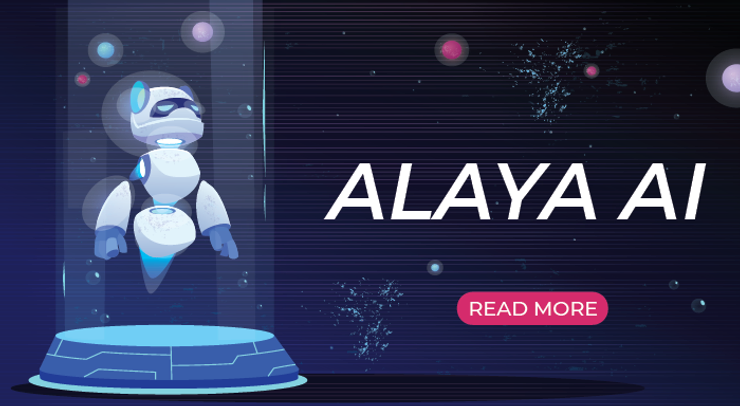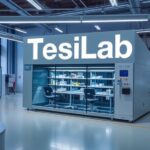Introduction
The world of Artificial Intelligence (AI) is continuously evolving, and new breakthroughs are shaping the future of how we interact with machines and data. One of the most promising innovations in this space is Alaya AI.
This AI-driven platform is revolutionizing the way we develop machine learning models and engage in crowd learning. It is helping both researchers and businesses leverage the power of collective intelligence while addressing challenges faced in traditional AI development.
In this article, we will explore how Alaya AI is reshaping AI development, the role it plays in crowd learning, and why it has become such a significant player in the AI space.
We will also discuss the advantages and challenges associated with using this platform and how it is transforming the landscape of artificial intelligence.
What is Alaya AI?
Alaya AI is an innovative platform that blends AI development with crowd learning to enhance the machine learning process. By leveraging the power of crowdsourced data and collective intelligence, Alaya AI can create highly accurate and effective machine learning models that would be otherwise difficult to build using conventional methods.
The platform works by allowing individuals and organizations to contribute data to train AI models.
This collaborative approach not only accelerates the development process but also results in more robust models. The core idea behind Alaya AI is to harness the collective expertise of a wide variety of contributors, resulting in better, faster, and more scalable AI solutions.
How Does Alaya AI Work?
The process behind Alaya AI is straightforward yet highly effective. The platform combines artificial intelligence with crowd learning, a method where diverse individuals contribute data, ideas, and insights to improve AI models. Here’s how it works:
Crowdsourced Data
Instead of relying solely on internal data sets, Alaya AI pulls data from a global pool of contributors. This crowdsourced data is used to train AI models that are more accurate and well-rounded.
Machine Learning Models
Once the data is collected, Alaya AI uses it to build machine learning models. These models are trained using advanced algorithms, ensuring that they can learn from a wide variety of inputs, making them more adaptable and flexible.
Continuous Learning
One of the unique features of Alaya AI is its ability to continuously improve its models. The platform can constantly update itself with new data and feedback, ensuring that the models are always up to date and relevant.
Collaborative Intelligence
By relying on the input of a large and diverse group of contributors, Alaya AI taps into collective intelligence, which often leads to better solutions than what could be achieved by a small group of developers.
The Role of Crowd Learning in Alaya AI
Crowd learning is one of the key components that set Alaya AI apart from other AI development platforms. By incorporating contributions from people around the world, Alaya AI ensures that its models benefit from a broad range of perspectives and experiences.
1. Diverse Data Sets
Traditional AI models often rely on limited or homogenous data sets, which can lead to biased or incomplete models. Alaya AI addresses this problem by integrating data from a wide variety of sources. This diversity helps reduce bias and allows the AI models to be more representative of different populations and scenarios.
2. Accelerated Development
With crowd learning, the process of training and improving AI models becomes faster and more efficient. Instead of waiting for a team of researchers to manually gather and process data, Alaya AI can leverage the power of the crowd to quickly obtain relevant information from many different contributors. This results in faster development cycles and more effective AI solutions.
3. Enhanced Accuracy
The collective intelligence of many individuals working together can lead to more accurate AI models. Alaya AI benefits from the diverse insights and knowledge that people bring to the table, which ultimately leads to improved accuracy in the AI models it creates. The platform’s ability to learn continuously from real-world data also ensures that its models stay relevant and precise.
4. Innovation Through Collaboration
Crowd learning also encourages innovation. When a diverse group of people contributes to the development of an AI model, the platform can explore new and unconventional approaches to solving problems. This results in more creative solutions and innovative breakthroughs that might not be possible through traditional AI development processes.
Benefits of Using Alaya AI
1. Accessibility and Inclusion
Alaya AI makes AI development more accessible to a broader range of individuals and organizations. By utilizing crowdsourced data and contributions, even smaller players in the AI space can benefit from powerful machine learning models. This democratization of AI development helps ensure that the technology is not limited to large corporations but can also be used by startups, researchers, and other organizations with fewer resources.
2. Cost-Effectiveness
Traditional AI development can be expensive, requiring large amounts of data and computing power. However, Alaya AI reduces these costs by utilizing crowd learning, where contributors voluntarily provide data. This crowdsourcing approach reduces the need for expensive data acquisition and the computational resources required for training models.
3. Improved Data Quality
Since Alaya AI uses crowdsourced data, it often has access to a more diverse and representative set of data. This variety improves the overall quality of the data used to train models, making them more robust and applicable to a wider range of scenarios. With this diverse data set, AI models built on Alaya AI are more likely to work in real-world environments.
4. Scalable AI Solutions
One of the biggest challenges in AI development is scalability. Alaya AI overcomes this challenge by using a crowdsourced model that can scale quickly. As more people contribute data, the platform’s ability to improve and update models increases, creating scalable AI solutions that can grow with the demands of businesses and users.
Challenges and Controversies Surrounding Alaya AI
Despite its many benefits, Alaya AI is not without its challenges and controversies. While the crowdsourcing model is innovative, it also raises several questions related to data privacy, security, and the quality of contributions.
1. Data Privacy and Security
Crowdsourcing data raises concerns about the privacy and security of user information. Alaya AI must ensure that it safeguards the data contributed by its users and prevents any misuse. Since the platform relies on data from many different sources, it must also establish trust with its contributors to ensure that sensitive information is handled properly.
2. Quality Control
Although crowd learning can bring in diverse data, it also poses challenges in terms of data quality. Alaya AI must have mechanisms in place to filter out irrelevant or low-quality contributions. Otherwise, the platform risks introducing noise into its models, which could negatively affect the performance and reliability of the AI.
3. Ethical Considerations
AI development always raises ethical concerns, particularly in terms of bias and fairness. Alaya AI must ensure that the crowdsourced data used to train its models is representative and does not perpetuate biases. The platform must also be transparent in how it handles data and ensure that its AI models are used ethically.
Conclusion
Alaya AI represents a significant shift in how artificial intelligence is developed. By combining AI development with crowd learning, the platform offers a unique approach that leverages the collective intelligence of many individuals to create more accurate, diverse, and scalable AI models.
The use of crowdsourced data not only accelerates the development process but also reduces costs and democratizes AI, making it accessible to a wider range of organizations.
However, like any emerging technology, Alaya AI faces challenges related to data privacy, security, and quality control. These issues will need to be addressed for the platform to achieve widespread adoption and trust.
Despite these challenges, Alaya AI is undoubtedly a step forward in the development of AI. By combining cutting-edge AI techniques with the power of crowd learning, it is reshaping how AI models are created and how collective intelligence can be harnessed to drive innovation.
As the platform continues to evolve, it could very well play a crucial role in the future of AI development.


